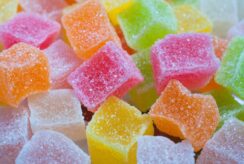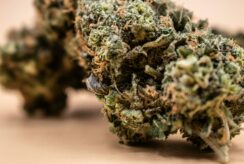Analyzing the Distinctions: THCa Flower vs. THC Flower
In the diverse landscape of cannabis, 2 compounds try attention: THCa and THC. Discovered within the complex tapestry of cannabis Flowers, these cannabinoids use one-of-a-kind qualities and potential effects. The burning question arises: What is the distinction between a THCa flower and a THC Flower? Exploring the nuances of these cannabinoid-rich Flowers reveals a globe of contrasts and possibilities. cheapest thca flower
Recognizing THCa Flower and THC Flower:
THCa (tetrahydrocannabinolic acid) and THC (tetrahydrocannabinol) are two main cannabinoids found in cannabis flowers, each with unique properties and impacts. THCa exists in its raw, acidic kind within the trichomes of cannabis flowers, serving as the forerunner to THC. Via a procedure called decarboxylation, THCa exchanges THC when subjected to warmth or light, unlocking its psychoactive potential.
On the other hand, THC is the psychoactive substance responsible for the blissful high commonly related to cannabis usage. When THC degrees are high in a marijuana Flower, it typically indicates potent psychedelic results upon intake.
Distinguishing Characteristics:
The vital distinction between a THCa flower and a THC Flower lies in their cannabinoid make-up and possible results on the consumer. A THCa flower contains mostly THCa in its raw, non-intoxicating form, providing prospective therapeutic advantages without causing a psychedelic high.
Conversely, a THC flower flaunts elevated degrees of THC, leading to potent psychedelic effects upon consumption. These results can range from ecstasy and leisure to enhanced sensory perception and altered understanding of time.
Possible Restorative Advantages:
THCa and THC flowers offer distinct restorative prospective based upon their cannabinoid profiles. THCa, in its raw type, might provide anti-inflammatory, neuroprotective, and antiemetic impacts without the envigorating impacts associated with THC consumption. Research recommends that THCa may hold assurance for problems such as joint inflammation, neurodegenerative diseases, and chemotherapy-induced queasiness and vomiting.
On the other hand, THC-rich Flowers supply potent analgesic, anxiolytic, and appetite-stimulating results, making them beneficial for managing discomfort, anxiousness, and hunger loss in clinical cannabis clients. THC’s psychoactive buildings can likewise add to state of mind enhancement and stress relief for recreational customers.
Usage Considerations:
When choosing in between a THCa flower and a THC flower, consumers must consider their preferred impacts and preferences. For those seeking restorative benefits without psychoactive effects, a THCa flower may offer a perfect option. Alternatively, individuals seeking powerful psychoactive impacts might go with a THC Flower with elevated THC levels.
Furthermore, usage technique plays a crucial duty in establishing the results of cannabis flowers. Inhalation techniques, such as cigarette smoking or vaporizing, provide rapid onset of impacts, making them ideal for intense symptom relief. Edibles and casts supply a slower onset however prolonged period of results, supplying sustained relief for persistent conditions.
Regulatory Factors to consider:
In areas where marijuana is legalized for medical or entertainment usage, regulations usually determine the acceptable THC content in marijuana Flowers. Strains with high THC levels might go through stricter policies and oversight to reduce prospective risks related to psychoactive impacts, specifically for amateur customers.
Alternatively, THCa-rich flowers may be much less regulated due to their non-intoxicating nature, providing higher access for medical cannabis patients seeking healing benefits without psychoactive impacts.
Navigating the Farming Realm: THCa Flower vs. THC Flower Growth
Within the extensive domain name of hemp growing, the emphasis often hinges on taking full advantage of the yield and quality of cannabinoid-rich Flowers. Among the myriad factors to consider, an essential concern arises: Does expanding THCa hemp Flower vary from growing THC hemp Flower? Navigating the nuances of cultivation methods for THCa and THC flowers unveils distinctive approaches and factors to consider critical for accomplishing optimal returns and cannabinoid profiles.
Comprehending THCa Hemp Flower and THC Hemp Flower Farming:
THCa (tetrahydrocannabinolic acid) and THC (tetrahydrocannabinol) hemp flowers both originate from the Cannabis sativa plant types, yet their cultivation techniques and objectives deviate based upon desired cannabinoid profiles. THCa hemp Flower cultivation focuses on optimizing THCa content while minimizing THC degrees to abide by lawful policies and meet consumer preferences for non-intoxicating products. On the other hand, THC hemp flower growing aims to make the most of THC levels for potent psychoactive impacts, commonly calling for mindful genetic option and growing practices.
Different Growing Considerations:
Hereditary Selection: Growing THCa hemp Flower typically involves picking low-THC cultivars bred for high THCa content. In contrast, THC hemp flower farming needs choosing high-THC cultivars with robust cannabinoid accounts for psychedelic effects.
Growing Setting: Both THCa and THC hemp Flowers prosper in similar ecological problems, including enough sunlight, well-drained soil, and optimal humidity levels. However, THC hemp Flower farming might necessitate extra procedures to alleviate the danger of cross-pollination with high-THC cannabis selections, making sure compliance with legal THC limitations.
Harvest Timing: Harvest timing plays an important role in figuring out cannabinoid profiles and overall flower top quality. THCa hemp flowers are commonly gathered previously in the blooming stage to optimize THCa content while lessening THC build-up. In contrast, THC hemp flowers may require extensive flowering durations to optimize THC degrees and psychedelic impacts.
Regulatory Conformity: Cultivating THCa hemp Flower requires rigorous adherence to lawful policies governing THC material, especially in areas with stringent hemp farming laws. THC hemp Flower farming might include additional governing considerations, such as licensing needs and compliance with THC potency restrictions to guarantee lawful compliance and customer safety and security.
Optimizing Cultivation Practices:
Pruning and Training: Pruning and training methods can enhance air movement, light infiltration, and general plant wellness, leading to boosted Flower growth and cannabinoid production. These practices are similarly relevant to both THCa and THC hemp Flower growing, advertising ideal returns and high quality.
Nutrient Management: Appropriate vitamins and mineral management is vital for optimizing cannabinoid manufacturing and plant vigor. Well balanced nutrient formulas tailored to certain growth stages and cultivar requirements can enhance THCa and THC hemp Flower advancement while reducing nutrient-related concerns.
Bug and Condition Administration: Vigilant parasite and disease management methods are vital for securing hemp crops and maintaining Flower top quality. Integrated bug monitoring (IPM) approaches including cultural, biological, and chemical control techniques can efficiently alleviate insect and condition stress in THCa and THC hemp Flower farming.
Conclusion:
To conclude, cultivating THCa hemp flower differs from cultivating THC hemp Flower mostly in genetic choice, harvest timing, and regulative compliance factors to consider. While both varieties share similar farming methods and environmental requirements, their divergent cannabinoid profiles necessitate customized strategies to optimize returns and cannabinoid content.
Whether growing THCa or THC hemp Flower, adherence to best techniques, regulatory conformity, and focus to detail are extremely important for attaining desired outcomes. As hemp farming continues to advance, a nuanced understanding of the distinctions between THCa and THC Flower growing will certainly empower farmers to browse the complexities of the industry successfully.




